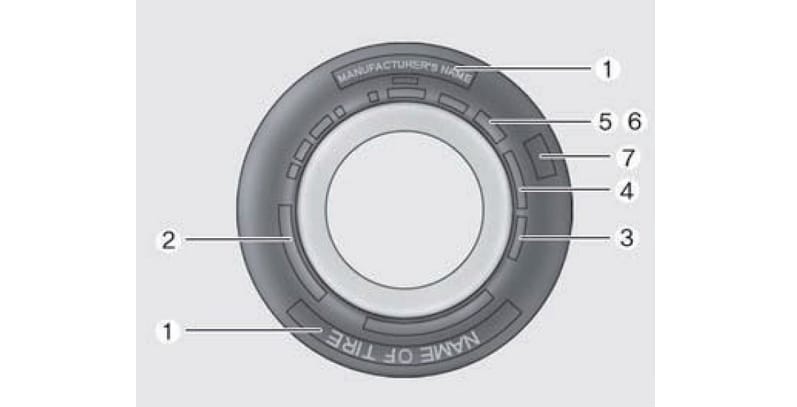open menu
- Home>
- discover kia>
- ASK>
- How are tires measured?
How are tires measured?
“You can find the size of your tire in the sidewall markings. The labeling contains information that includes the tire width, aspect ratio, rim diameter, and wheel size.”

The tire sidewall labeling identifies and describes the fundamental characteristics of the tire. They also provide the tire identification number (TIN) for safety standard certification. The TIN can be used to identify the tire in case of a recall.
1) Manufacturer or brand name
The manufacturer or brand name is shown.
2) Tire size designation
Tire size designation is also marked in a tire’s sidewall. This information will help you select replacement tires for your car. The following explains what the letters and numbers in the tire size designation mean.
Take the tire size designation below as an example. Note that these letters and numbers are provided as an example only; your tire size designator could vary depending on your vehicle.
P235/55R19 108T
● P - Applicable vehicle type (tires marked with the prefix “P’’ are intended for use on passenger vehicles; and “LT” for light trucks. However, such letters may not be seen before the number sequence in a European metric tire)
● 235 - Tire width in millimeters.
● 55 - Aspect ratio. The tire’s section height as a percentage of its width.
● R - Tire construction code (Radial).
● 19 - Rim diameter in inches.
● 108 - Load Index, a numerical code associated with the maximum load the tire can carry.
● T - Speed Rating Symbol.
Wheel size designation
Wheels are also marked with important information that you need if you ever have to replace one. The following explains what the letters and numbers in the wheel size designation mean.
Here is an example of wheel size designation:
7.5JX19
● 7.5 - Rim width in inches
● J - Rim contour designation
● 19 - Rim diameter in inches
3) Tire Identification Number (TIN)
The manufacturing date is indicated by the last four digits in the TIN.
4) Tire ply composition and material
The number of layers or plies of rubber and coated fabric in the tire.
5) Maximum permissible inflation pressure
The maximum amount of air pressure that should be put in the tire.
6) Maximum load rating
The maximum load in kilograms and pounds that can be carried by the tire.
7) Uniform tire quality grading
Quality grades can be found where applicable on the tire sidewall between tread shoulder and maximum section width.






